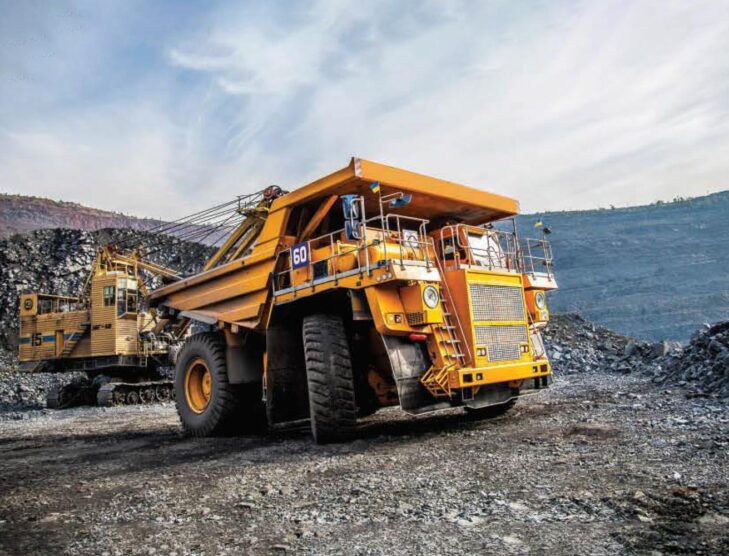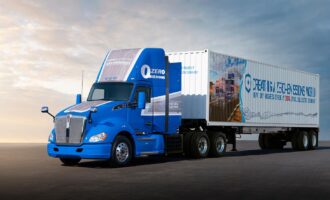
The electric mine: Demise of the diesel
In 2019, the global mining equipment market size was estimated at USD144.37 billion. The market is expected to grow at a compound annual growth rate (CAGR) of 12.7% to 2027, according to a March 2020 report by Grand View Research. An overwhelming majority of the equipment employed in underground mining is diesel-powered.
Exhaust emissions are a significant contributor to environmental pollution. Diesel emissions, such as carbon monoxide and dioxide, nitrogen and sulphur oxides, hydrocarbons, and particulates have also been associated with an array of negative health impacts. The World Health Organisation (WHO) has classified diesel emissions as carcinogenic to humans. In mining, there is a significant cost associated with protecting workers from harmful emissions, such as ventilation in closed mines and tunnels.
Tier 4 diesel engine standards are the strictest U.S. EPA (Environmental Protection Agency) emissions requirements for off-highway diesel engines. Compliant engines lessen the environmental footprint and diesel particulate matter, improving working conditions for mine workers. However, the emergence of electrification in mining could take health, safety, and environmental protection to another level. Emission-free, electrified mining equipment provides the added benefits of significant noise and vibration reductions compared to traditional diesel equipment. A 2019 study by SRK Consulting into a South American mine found a significant reduction in ventilation system infrastructure requirements when opting for battery electric vehicles (BEV) over a diesel-powered equivalent, due to reduced airflow requirements to mitigate diesel fumes.
Underground mines are harsh environments and are getting deeper and more expensive. With fewer moving parts, BEVs have been associated with lower maintenance and operational costs. A highly efficient drivetrain enables capacity and productivity improvements — battery-driven trucks can haul materials faster than their diesel-powered competitor. Advances in batteries and fast-charging technology are encouraging mining companies to dip their toes into the waters of electrified mining.
Unfortunately, converting to an electric mine is not as simple as switching out existing diesel equipment. BEVs bring with them an additional set of challenges — including new safety concerns and the loss of a simple refuelling process. The effectiveness of battery technology depends on the maintenance of the optimum battery temperature.
Batteries are the most expensive component of a BEV. The lifetime of a battery is linked to its thermal history, says Nicolas Champagne, formulation team manager, R&D at Total. Extremes of temperature impact longevity, efficiency, range, and charge times. “To handle the thermal stresses induced during fast charging, the improvement of existing battery thermal management systems has become key,” says Champagne, speaking at The Electric Mine Virtual Conference in November 2020. Thermal management improvements can lower total cost of ownership and carbon dioxide footprints. Less than 10 minutes in the “danger zone” can degrade a battery’s performance, says Champagne.
Champagne joined Total in 2013 and is a formulation advisor in the use of classic and specialty base oils. He runs a team developing new specialty fluids for electric vehicles with innovative thermal management properties. Champagne completed a doctorate in Physical Chemistry from the University of Paris Diderot, in France, in 2011.
Vehicle manufacturers have tried a myriad of cooling solutions: passive, forced convection, refrigerants, and indirect cooling mechanisms. Passive and forced convection air-based cooling have shown limited effectiveness in heat removal. The use of a water-glycol mixture flowing in channels is a popular approach with major automakers. The major drawback of such a system is thermal inhomogeneity, says Champagne. Heat is preferentially extracted close to the fluid channels, creating temperature dispersion that can impact battery health, he says.
Liquid direct cooling, or immersion cooling, is an emerging technology for battery thermal management. The method, which has previously been deployed in the cooling of data centres and high-performance computing, involves submerging battery cells in a dielectric liquid coolant. The approach provides superior thermal contact and homogeneity, suggests Champagne.
In July 2016, Total, the fourth-largest global oil and gas company, acquired French battery manufacturer SAFT to accelerate its move towards cleaner energy. SAFT is a world-renowned designer and manufacturer of nickel batteries and primary lithium batteries used in transport, industry, and defence.
It seems the oil major’s leap into battery technology is starting to bear fruit. During The Electric Mine Virtual Conference, Champagne presented an advanced dielectric fluid for battery thermal management that enables the direct cooling of battery electrochemical cells. The innovation started in passenger cars, but has been adapted to mining conditions, says Champagne. The Total representative indicated they are already in discussions with at least one customer about deploying the fluid in BEV for mining.
Total developed a novel bench test at the cell level to mimic the heat generated in a fast-charging scenario. The bench test allows the assessment of heat dissipation performance at varying heat power and flow rates. Total’s advanced dielectric fluid can handle extreme heat, even with lower flow rates, suggests Champagne. Made from renewable carbon that is readily biodegradable, Champagne highlighted long-lasting performance and no dielectric degradation over time.
Total reproduced bench test results using numerical models and simulation results at a battery pack level to extrapolate thermal performance in the mining sector.
Champagne presented a scenario of an optimised 40KwH battery pack simulation in a fast-charging environment. The setup included 100% battery pack immersion, two rows of 96 cells with a 0.6 mm gap between cells. Champaign suggests larger gaps between cells are unnecessary when targeting a five-degree temperature variance.

The scenario included a total fluid mass of 6.5kg (2% of total battery pack weight), a fluid flow rate of 20 l/min and pressure loss of less than 600 mbar. Accordingly, only a low power pump is required. Use of Total’s fluid in this configuration presents an excellent cost-performance ratio, says Champagne. Classical heat exchanges, such as a current a/c system, can be used to remove heat from the fluid, though components may be adapted to optimise the system, he says.
Champagne emphasised the competitiveness of Total’s direct liquid cooling solution compared to alternative cooling options. Water-glycol is viewed as a relatively low-cost option as the fluid and cold plates are inexpensive. However, thermal pads are expensive, says Champagne, meaning the overall price is not too dissimilar to direct immersion cooling. The Total representative also noted safety concerns relating to water-glycol handling. Some mining operators are employing battery swapping as opposed to recharging during shifts. A direct immersion lubricant solution would prove beneficial in all battery-powered applications, even if you do not use fast charging or battery swapping, suggests Champagne. Operators can still take advantage of longer battery lifetimes and a decrease in the cost of ownership if they are swapping batteries. The safety impact of direct immersion is also interesting. Even if you are not fast charging the solution may have some safety advantages, suggests Champagne. One thing is for sure, there are big changes on the horizon for the mining industry.







